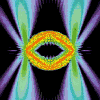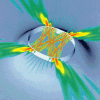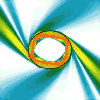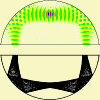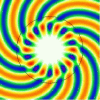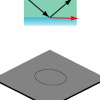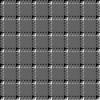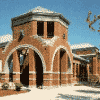Dome resonators
Mixed boundary conditions in dome cavities
Exactly solvable problems
There are only a few optical resonator geometries for which
the wave equation can be solved analytically in terms of
special functions. An important and well-known example is the
ideal dielectric sphere, for which the solution procedure (in
the context of light scattering) was found by the German
physicist Gustav Mie, then at the University of Greifswald
(1908). The problem is solvable because the spherical surface
coincides with an iso-surface of the spherical coordinate
system, and the boundary conditions are rotationally
invariant as well.
A new geometry for which at least the scalar wave equation
can be solved analytically is the parabolic
dome. This solution was obtained by me in
collaboration with Isabelle Robert and Izo Abram (read more on
a separate page: Ray and wave solutions
in the parabolic dome). Here is a side view of a stationary
state of the three-dimensional cavity, which has the shape of a
dome:

This is an exact solution of the scalar wave equation. Some
fully vectorial modes in such cavities can also be written down
exactly. In contrast to the Mie problem, the boundaries here
are not contour surfaces of any single orthogonal coordinate
system. Moreover, the cavity has mixed boundary
conditions if the top mirror is a perfect electric
conductor while the bottom mirror is a dielectric mirror.
There is an extremely close connection between the exact
wave solutions and the ray-optics approximation, which in this
case turns out to yield quantitatively correct results for the
cavity spectrum when combined with a standard semiclassical
quantization approach.

Note the similarity between the above ray pattern and the wave
plot above. The following link leads to additional material on
this subject.
Taking polarization seriously
Motivated by recent progress toward fabrication of dome
cavities, my graduate student David Foster and I have taken
this subject one step further: we study the fully vectorial
modes of dome cavities with arbitrary shapes and various, mixed
boundary conditons. This includes the effects of radiation
losses through realistic Bragg mirrors, and is not limited to
any paraxial approximation.
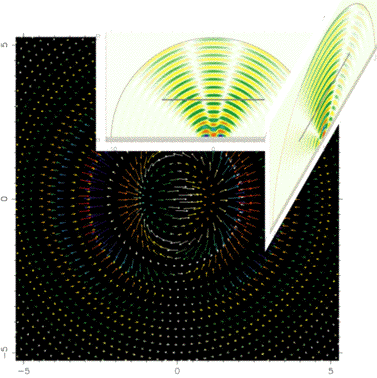
Shown here is a cavity mode in two orthogonal side-view cross
sections, together with its electric vector field plotted in a
horizontal cross section whose location is indicated by the
floating grey bars in the side views. Deviations from
paraxiality then show up in the fact that the elctric field
vector does not lie in a horizontal plane. The color in the
vector plot indicates the magnitude of the vertical field
components.
The methods used to perform these calculations, and some
results, are reported in our paper: D. H. Foster and J. U.
Nöckel, "Methods for 3-D vector microcavity problems
involving a planar dielectric mirror", Optics Communications
234, 351-383 (2004).
Results
This page © Copyright Jens Uwe Nöckel,
03/2004
Last modified: Mon Oct 1 13:57:04 PDT 2012
